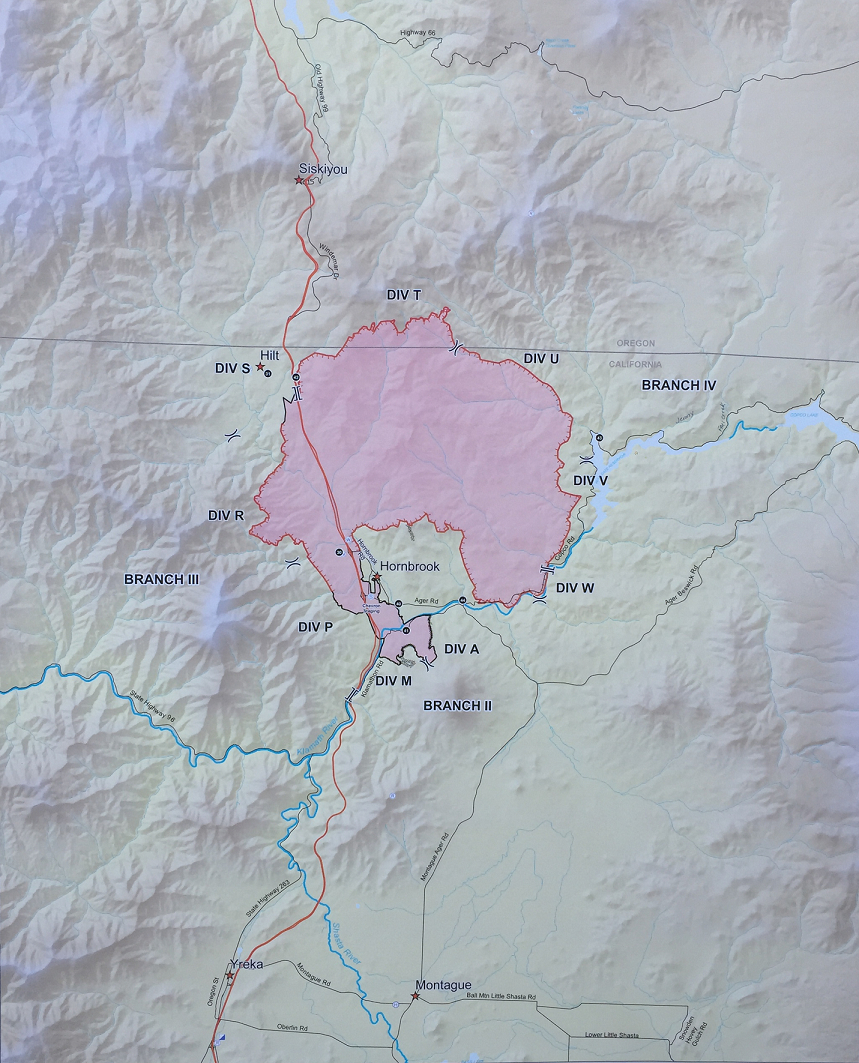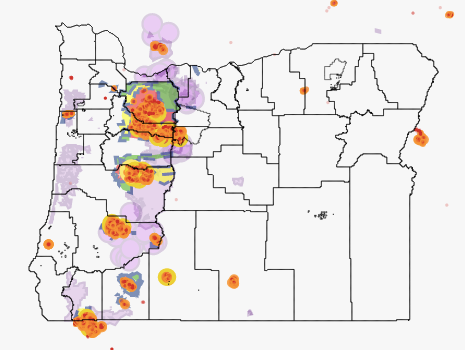

“Those are where the soil cooked pretty hot and it’s hard to grow vegetation back for a while because there’s nothing to intercept the rain that hits the ground.” “In the red areas, all of the needles were consumed and all we’re seeing is black sticks and snags,” he said. A lot of the vegetation is gone and it doesn’t look great, but the nice thing is that the needles provide some ground cover to slow down erosion so that the soil can start regenerating a little quicker, especially in a moist place like Western Oregon,” said Jess Clark, a communications specialist for the BEAR teams (Burned Area Emergency Response) that created the maps. “Moderate severity, which is the yellow on the maps, means that when you drive or walk through there, a lot of the trees are scorched and probably dead, and the needles are brown.

Meanwhile, yellow and red indicates more impacted forest. In looking at the maps, green indicates very little or no burn impact, while light green denotes low severity - the ground might be charred but the forest canopy is intact. View Gallery: PHOTOS: Wildfire impact on Opal Creek Wildernes, Little North Santiam Burn severity categories It also provides a good snapshot of how severely the forest was burned, fire officials said, by assigning four different categories: unburned, low, moderate and high. The maps, created with satellite data, prioritizes analyzing how burned the soil is so meteorologists and others can determine areas of concern for landslides, debris flows and flash flooding. The maps also show burn severity of the Holiday Farm Fire (McKenzie River east of Eugene), the Archie Creek Fire (North Umpqua River, northeast of Roseburg) and the Thielsen Fire near Diamond Lake. Of the 23,900 acres in the Mount Jefferson Wilderness impacted by the Lionshead Fire, 34 percent burned at high or moderate severity while the rest burned at low or no severity. Jefferson Park, the alpine meadow and lakes at the base of Oregon's second tallest mountain, does not appear to have burned much at all. The Mount Jefferson area was less impacted. Seventy-four percent of the Opal Creek National Recreation and Wilderness area burned at high or moderate severity, indicating significant tree mortality. The maps confirm what the Statesman Journal reported previously - the Opal Creek area and Little North Santiam Canyon were burned severely, with many of the ancient rainforest’s trees killed.

The maps show the burn severity for seven of the largest wildfires in Oregon, including the Beachie Creek, Lionshead and Riverside fires, the trio of blazes that burned roughly 535,000 acres east of the Willamette Valley. Story updated with specific details on Opal Creek, Mount Jefferson burn severity.ĭamage caused by the Labor Day wildfires on Oregon’s forests and mountains became clearer Thursday with the release of maps showing where the fires burned hottest, and where they had little impact.

Watch Video: VIDEO: Opal Creek area hit hard by Beachie Creek Fire


 0 kommentar(er)
0 kommentar(er)
